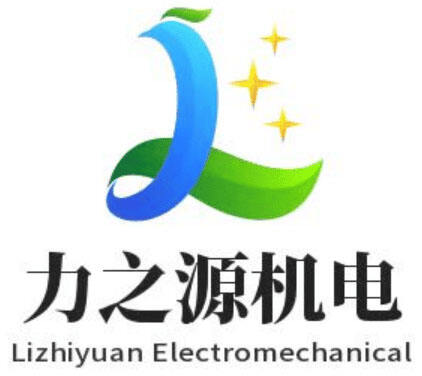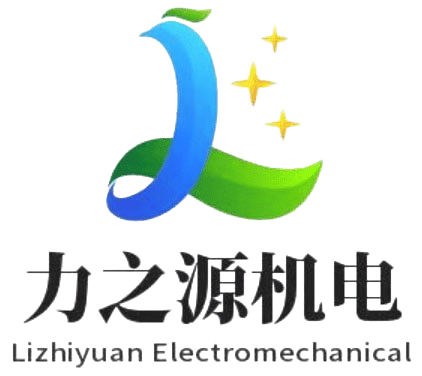깨끗한 광학 요소와 냉각 부품 유지하기
1. 일일 거울 및 렌즈 청소 기술
정기적인 점검을 통해 거울과 렌즈를 깨끗하게 유지하면 레이저의 정확도를 유지할 수 있으며, 시간이 지남에 따라 손상이 누적되는 것도 방지할 수 있습니다. 적절한 청소 제품을 사용하는 것이 중요한데, 잘못된 방법은 민감한 표면에 긁힘이 생기게 할 수도 있기 때문입니다. 일상적인 먼지 제거의 경우 마이크로화이버 천이 가장 효과적이며, 거친 재질은 완전히 피해야 합니다. 요즘 많은 전문가들은 레이저용으로 특별히 제작된 전용 청소 키트를 애용하고 있습니다. 이러한 키트는 일반적으로 다양한 유용한 도구와 적합한 청소 용품들을 포함하고 있어서 전체 청소 과정을 훨씬 빠르고 안전하게 만들어 줍니다. 광학 부품들이 잘 관리되고 있다면 레이저의 수명이 연장될 뿐만 아니라, 서비스 기간 동안 일관된 성능을 유지할 수 있습니다.
2. 쿨러 시스템의 주간 이물질 제거
냉각기 시스템을 정기적으로 매주 청소하고 점검하면 최고의 효율로 작동합니다. 매주 하루씩 시간을 내어 모든 부분을 꼼꼼히 살펴보고 부품 주변에 쌓인 먼지나 때를 제거하세요. 대부분의 얼룩에는 부드러운 솔이 효과적이지만, 시간이 지나면서 쌓인 이물질은 진공청소기를 사용하는 것이 좋습니다. 이러한 모든 유지 관리 작업을 기록해 두면 나중에 문제가 발생할 때 쉽게 발견할 수 있습니다. 냉각 시스템을 적절하게 유지 관리하면 예기치 않은 작동 중단이 줄어들고 레이저 장비의 장기적인 성능이 향상됩니다. 이러한 체계적인 유지 관리 계획을 고수하면 냉각 부품의 수명이 길어지고 지속적인 고장이나 수리 없이 안정적으로 작동할 수 있습니다.
냉각 시스템 성능 최적화하기
1. 얼음 욕조와 같은 효율성을 위해 냉각액 품질 모니터링
아이스 밧데리 레벨의 냉각 성능을 유지하려면 정기적으로 냉각수 상태를 점검해야 합니다. pH 수준을 확인하고 전도도 테스트를 실시하면 화학적 균형을 유지할 수 있으며, 시스템이 불균형으로 인해 제대로 작동하지 않는 상황을 방지할 수 있습니다. 냉각수가 오염되거나 시간이 지나면서 성분이 분해될 경우 지체하지 말고 즉시 교체하거나 보충해야 하며, 그렇지 않으면 효율성이 급격히 떨어지게 됩니다. 또한 시스템 주변을 정기적으로 점검하는 것도 중요합니다. 아무도 냉각수의 완전성을 서서히 약화시키며 시스템이 불필요하게 더 열심히 작동하게 만드는 미세한 누수를 놓치고 싶어 하지는 않을 테니까요. 이러한 유지보수 관행을 따르는 것은 원활한 운용과 향후 비용이 많이 드는 고장 사이의 차이를 만들어냅니다.
2. 수 차일러 튜브에서 칼슘 찌꺼기 형성 방지
냉각수 파이프 내부에 스케일이 생기지 않도록 관리하는 것은 시스템이 효율적으로 작동하도록 하기 위해 매우 중요합니다. 물을 적절히 처리하면 성가신 칼슘 찌꺼지와 다른 미네랄 성분들이 파이프에 쌓이는 것을 방지할 수 있으며, 이는 물이 원활하게 흐를 수 있도록 도와줍니다. 최소한 매달 한 번 정도는 냉각 장치 시스템을 세척하여 아무것도 막히지 않도록 관리해 주는 것이 좋으며, 이는 전체 냉각 과정이 더욱 효과적으로 작동하도록 해줍니다. 또한 직원들이 초기 경고 신호를 알아차릴 수 있도록 교육하는 것도 중요합니다. 직원들은 예상치 못한 온도 변화나 냉각 장치가 이상하게 작동하기 시작하는 것과 같은 증상을 주의 깊게 살펴보아야 합니다. 이러한 문제들을 조기에 발견하면 큰 문제로 악화되기 전에 해결할 수 있습니다. 이러한 모든 단계는 냉각 장치의 수명을 연장하는 데 도움이 될 뿐만 아니라 생산 중단과 같은 비용이 많이 드는 고장을 방지하여 매일매일 원활하게 운영될 수 있도록 유지해 줍니다.
정기적인 레이저 튜브 점검 실시
1. 가스 누출 및 튜브 열화 확인
CO2 레이저 시스템을 효율적이고 안전하게 가동하려면 레이저 튜브를 정기적으로 점검해야 합니다. 적절한 감지 장비를 사용하여 가스 누출 테스트를 수행하면 심각한 문제로 악화되기 전에 잠재적인 누출을 발견할 수 있습니다. 튜브 자체를 살펴보아 마모, 변색 또는 기타 손상의 징후를 확인하면 기술자들이 교체나 수리가 필요한 시점을 파악할 수 있습니다. 이러한 점검 결과를 모두 기록해 두면 향후 어떤 부품이 고장날 가능성이 있는지 예측하고 다음 정기 점검 시기를 결정하는 데 유용한 유지보수 기록을 만들 수 있습니다. 이러한 절차를 따르는 것은 레이저의 최고 성능을 유지할 뿐만 아니라 예상치 못한 고장과 중요한 작업 중 발생하는 다운타임을 방지함으로써 장기적으로 비용을 절감하는 데도 도움이 됩니다.
2. 차가운 플런지 신뢰성 electrical 연결 테스트하기
레이저 시스템에서 전기 연결을 신뢰성 있게 유지하는 것은 특히 냉각 플런지 유닛과 함께 작동할 때 매우 중요합니다. 기술자들이 멀티미터나 유사한 장비를 사용하여 테스트를 진행하면 전력이 일관되게 흐르도록 유지할 수 있고, 냉각 과정과 레이저 작동을 방해하는 성가신 중단 현상을 줄이는 데 도움이 됩니다. 대부분의 유지보수 담당자들은 시스템 주변을 주기적으로 점검하여 느슨해진 전선을 확인하고 조이는 것이 향후 전력 문제를 예방하는 데 큰 도움이 된다는 것을 알고 있습니다. 일부 작업장에서는 주요 연결 지점이 어디에 위치해 있는지를 보여주는 간단한 다이어그램을 만들기 시작했습니다. 이러한 시각 자료는 기술자들이 어디서부터 점검해야 할지 추측할 필요가 없기 때문에 정기 점검 시 시간을 절약할 수 있습니다. 실제 설치 사례를 통해 확인한 바에 따르면, 특히 온도 조절을 위해 냉각 플런지 통합이 요구되는 상황에서 전기 작업의 품질이 시스템 전체의 장기적인 성능에 실제로 큰 차이를 만듭니다.
기계 부품을 전략적으로 윤활시키세요
레이저 시스템이 원활하게 작동하도록 유지하는 것은 중요하며, 기계 부품을 적절히 윤활하는 것이 이러한 유지 관리의 핵심적인 부분입니다. 가이드 레일 유지 관리와 베어링 관리에 대해 자세히 살펴보겠습니다. 이 두 가지는 마찰과 마모를 줄이는 데 있어 중요한 역할을 합니다.
1. 원활한 작동을 위한 가이드 레일 유지 관리
가이드 레일을 항상 좋은 상태로 유지하는 것이 레이저 절단기의 일일 성능에 큰 차이를 만듭니다. 레이저 시스템용으로 특별히 제조된 적절한 윤활제를 사용하지 않으면 마찰이 빠르게 증가할 수 있습니다. 고품질의 윤활유는 장비가 원활하게 작동하도록 유지해주며, 초기 마모를 방지함으로써 장기적으로 비용을 절약할 수 있습니다. 대부분의 작업장에서는 일반적으로 500시간의 가동 시간마다 정기 유지보수를 실시하는 것이 효과적이라고 판단합니다. 이러한 정기 점검 일정을 따르면 베어링에서 직선 가이드까지 모든 부품이 문제를 일으키기 전에 점검받을 수 있습니다. 그리고 무엇보다도, 아무도 예기치 못한 고장을 해결하기 위해 수천 달러를 들이고 싶어 하지는 않을 것입니다. 각 윤활 작업과 점검 사항을 기록하는 것은 단순한 서류 작업이 아닙니다. 이러한 기록은 부품들이 언제부터 마모 징후를 보이기 시작했는지를 정확히 알려주며, 생산 도중에 부품이 고장 나기 전에 교체 시점을 예측할 수 있도록 도와줍니다.
2. 마찰 관련 스트레스를 피하기 위한 베어링 관리
베어링은 오랫동안 문제 없이 원활하게 작동하려면 정기적인 점검이 반드시 필요합니다. 베어링 부위에서 이상한 소음이 들리거나 평소와 다르게 진동이 발생한다면, 이는 베어링이 마모되고 있다는 분명한 신호입니다. 즉, 문제가 심각해지기 전에 유지보수가 이루어져야 한다는 의미입니다. 올바른 종류의 그리스 사용하는 것도 중요합니다. 모든 윤활제가 다 효과적인 것은 아닙니다. 특정 조건에서 더 잘 밀착되는 특수 제형이 필요한 기계도 있습니다. 팀 내 모든 구성원들이 베어링 유지보수의 기초를 이해하도록 하는 것이 일상 운영에 큰 차이를 만듭니다. 장비를 직접 다루는 작업자들은 작은 소홀함이 시간이 지남에 따라 누적될 수 있다는 점을 종종 인지하지 못합니다. 베어링을 잘 관리하면 고장으로 인한 정지가 줄어들고 장기적으로 비용을 절약할 수 있습니다. 예방 유지보수보다 교체 비용이 훨씬 더 들기 때문입니다. 갑작스러운 정지 없이 원활하게 작동하는 기계는 운영자와 유지보수 담당자 모두에게 작업 환경을 더 편하게 만들어 줍니다.
온도 제어 프로토콜 구현
과열 방지를 위한 열 모니터링
레이저 시스템 내부의 과열 문제를 예방하는 데 열 모니터링이 핵심적인 역할을 합니다. 장비의 핵심 지점에 고품질 온도 센서를 설치하여 지속적인 온도 추적을 시작하십시오. 이러한 센서는 온도가 지나치게 상승하기 시작할 때 조기 경보 역할을 하여 비정상적인 온도 수치를 신속하게 감지할 수 있습니다. 일정 온도 수준에서 작동하는 경보 시스템을 추가로 설치하는 것도 과열 상황이 악화되기 전에 이를 감지하는 데 중요합니다. 경보가 작동하면 기술자는 신속하게 조치를 취하여 장비의 심각한 손상을 방지할 수 있습니다. 시간 경과에 따른 온도 기록을 살펴보면 향후 문제가 발생할 징후를 미리 파악할 수 있습니다. 정기적인 기록 분석을 통해 향후 잠재적 문제를 사전에 예측할 수 있는 경향성을 확인할 수 있습니다. 이러한 접근 방식은 레이저 시스템이 오랜 기간 동안 원활하게 작동하도록 유지하고, 비용이 많이 드는 수리 비용을 절감하는 데 도움이 됩니다.
적절한 환기가 차가운 플러지 쿨러와 같이 유지되도록 하세요
레이저 시스템이 효율적으로 작동하려면 좋은 환기가 매우 중요합니다. 마치 콜드 플런지 챌러가 작동하여 온도를 낮추는 방식처럼요. 레이저 장비에 대한 환기 설계를 할 때는 기계 주변의 온도를 일정하게 유지하는 것이 특히 중요합니다. 콜드 플런지 챌러의 방식을 참고해 보세요. 이 장비는 온도를 효과적으로 조절하면서도 일정한 공기 흐름을 제공하기 때문에 성능이 우수합니다. 또한, 통풍 경로가 되는 덕트에 대한 정기 점검도 잊지 마세요. 대부분 사람들이 간과하는 부분이지만, 시간이 지나면서 덕트가 막혀 공기 흐름이 완전히 차단될 수 있습니다. 레이저 장비 운용 중 온도가 갑자기 정상 수준 이상으로 상승하는 것도 주의 깊게 살펴보아야 합니다. 이러한 온도 급상승은 보통 즉시 추가적인 냉각이 필요하다는 신호입니다. 환기 시스템을 소홀히 하면 전체 시스템의 성능 저하뿐 아니라 부품의 수명도 예상보다 훨씬 빨리 줄어들게 됩니다. 온도가 안전한 기준치를 꾸준히 넘어가는 경우에는 냉각 시스템 업그레이드를 고려해 보세요. 보통 3~4번 정도 과열 현상이 반복된다면 그 시점이 적절할 수 있습니다. 주변 환경의 온도를 적정 수준으로 유지하면 장비 고장을 예방하고, 장기적으로 비용이 많이 드는 수리 비용을 절약할 수 있습니다. 이런 정기적인 유지보수는 모든 장비가 원활하게 작동하도록 도울 뿐 아니라, 레이저 시스템의 교체 주기를 연장하는 데도 큰 도움이 됩니다.


